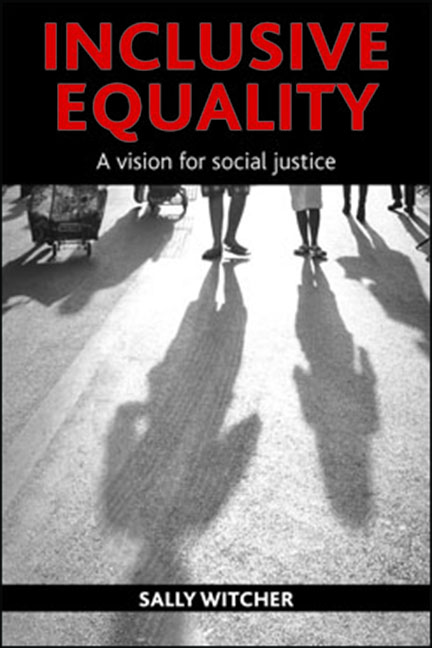six - Inclusive policy processes
Published online by Cambridge University Press: 03 February 2022
Summary
Introduction
This chapter draws on themes arising from previous discussion and explores their implications for the way in which social policy is designed and delivered, if it is to enable people to realise capabilities. This seems likely to entail removing social barriers, increasing people's resources and/or reducing their resource requirements.
It was previously suggested that the outcome of one process becomes the starting point for the next. Processes may not be best viewed as merely the means to achieving an end outcome; outcomes could be the means of engaging in more processes. It has also been proposed that participation in relationship networks is central to inclusion. The nature of the processes through which relationships are enacted therefore takes centre stage.
Individuals relate to each other and to wider society for various reasons: ‘we come together to share, divide and exchange’ (Walzer, 1983, p 3), all of these distributive processes oviously necessitating some form of interaction. Preceding chapters have each had something to contribute towards conceptualising how such processes might best be structured and enacted in ways that promote inclusive equality. This chapter aims to draw together and develop insights regarding process design as it pertains to the distribution of welfare goods and services. Different models are possible; some more conducive to inclusive equality than others. The chapter begins by reflecting in general terms on how an overall social goal of maximising inclusive equality and with it the scope for social realisation, could reshape the purpose and operations of institutions. It then narrows the focus down onto those involved in the design and delivery of welfare goods and services, due to their potentially pivotal roles in either facilitating inclusion or entrenching exclusion.
We examine how the process of distribution can be broken down into functions and stages and consider who might be responsible for particular aspects of the process, or contribute towards its framing and enactment. Through deconstructing processes in this way it becomes easier to pinpoint where misrecognition can intervene to undermine policy intentions – not to say social justice – leaving individuals unjustifiably disadvantaged. Social barriers, including organisational, environmental and communications barriers, can intervene at any stage.
- Type
- Chapter
- Information
- Inclusive EqualityA Vision for Social Justice, pp. 155 - 180Publisher: Bristol University PressPrint publication year: 2013



